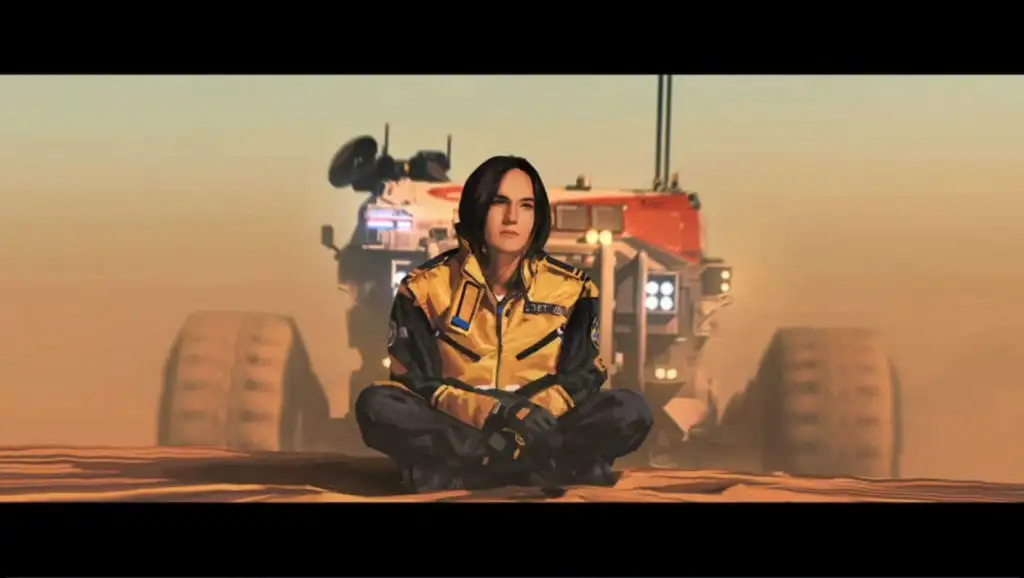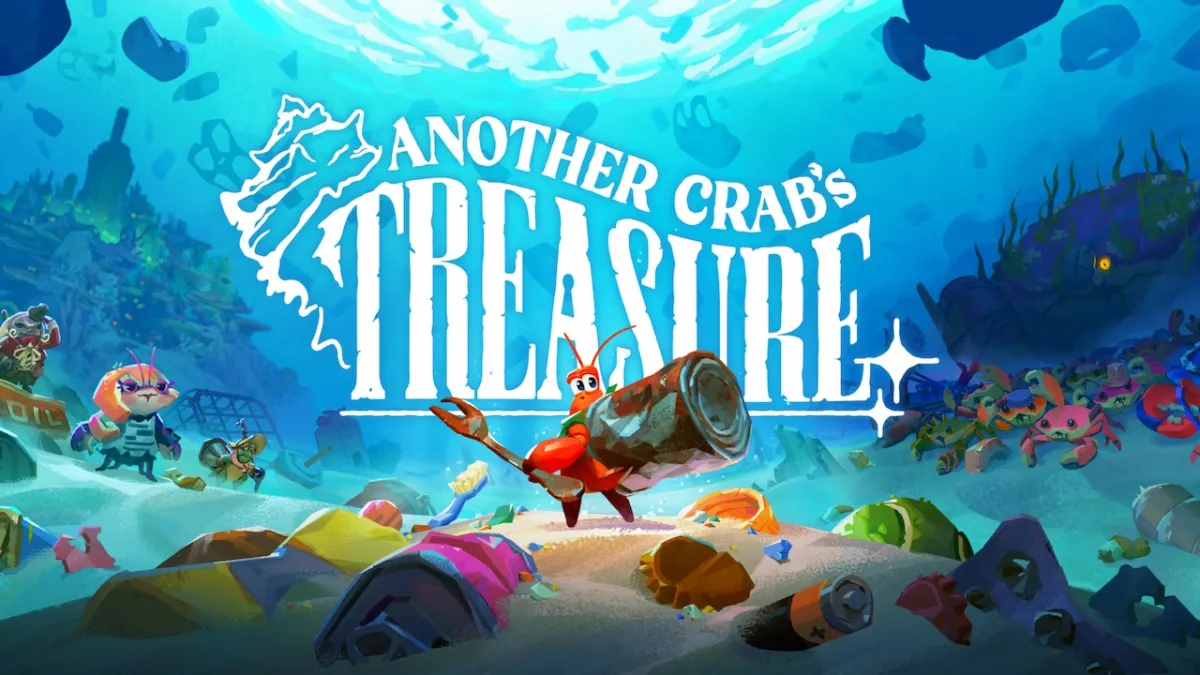Blackbird Interactive’s Homeworld: Deserts of Kharak has gone through lots of name changes. It’s been Hardware: Shipbreakers, Homeworld: Shipbreakers and then, thanks to the tie-in with Gearbox who own the IP, it ended up as what it is today. The good news for fans of the Homeworld narrative is that this game has fully embraced the series lore, taking players back to a time before the space based saga.
Set on the desert planet of Kharak, you command an expeditionary force in the search for a all-powerful ancient artifact. An item so powerful it could save the dying planet and your race. There is, though, an obstacle in your way; the dastardly desert dwelling force called the Gaalsien who are trying to stop the expedition. I won’t go into the story too much further because the game relies on story telling as you play and that would spoil all the fun.
Right from the get go it’s obvious this is a Homeworld game. Everything from the style of the animated cutscenes to the overlay map is a continuation of that design. This is the classic Homeworld plonked into a land based campaign with different, but at the same time familiar, units. In fact even the first couple of missions play in a very similar way to the previous games, to the point where it’s a little predictable. Big mothership needs fixing up before setting out on a journey unprepared for what lies ahead.

Time for a Refit.
It’s hard to overstate how many of the previous Homeworld games’ UI and input features are shared by Deserts of Kharak. The overlay map is identical (though this time there’s no need to worry about what’s above or below), the audio cues are the same throughout, and hotkeys and unit maneuvering works in practically the same way. Anyone who has played the first two games may as well skip the tutorial and just press on.
Despite the fact so much is similar, however, the game manages to play very differently. In Homeworld you had time to make battle decisions, but Deserts of Kharak plays at a much faster pace. Same controls, but a very different feel.

Soaking up the sun on the dunes.
Deserts of Kharak reminded me of games like Ground Control, where terrain can make or break a battle, and where taking the high ground gives troops a distinct advantage. The rolling sand dunes of Kharak (with the odd rocky outcrop) can be key to getting the upper hand, and, thankfully, line of sight is indicated by solid or broken red lines. To be honest though, the action can move so fast you may as well just pile everything in when you see an opportunity for a tactical advantage. There are no formations for grouped units, so piling in is sometimes the best option.
There’s a quite an array of units on offer, such as the fast moving LAV’s which act in a very similar way to the fighters in Homeworld; quick and maneuverable. Then there are the large cruiser vehicles, which are slower but pack a bigger punch. Not forgetting the aircraft, which are absolutely essential to winning missions. Without these strike fighters and bombers the sandy expedition would be a complete waste of time.
Resources need to be collected in the form of CUs and RUs, one for construction and one for research. This is where the “shipbreakers” part of the game (and former title) comes in to play. Dotted around the map are ancient ships which need to be first broken down with an explosion so that the resources from the debris can be harvested. These ships also provide ancient artifacts which are used to improve your main Carrier ship tech via upgrades. These can also be applied to the vehicles which are produced inside the Carrier.

What a wreck!
The game’s main character, Rachel S’Jet, holds the power throughout the campaign and she must be kept alive at all costs by protecting her Base Runner. She plants the charges to break the ships down, can collect the artifacts, repair vehicles, hack enemy units and launch EMPs to disable turret defences or vehicles. Lose Rachel and it’s game over. Fortunately her vehicle is quite robust, and you’d be hard pushed to lose a mission by getting her killed.
There’s no doubt the early missions are not much of a challenge which you’d expect because most early missions in RTS games are tutorials. In Kharak this seems to go on for far too long and it only starts to get interesting towards the end of the campaign.

Using the EMP to disable turrets. Very handy.
As the campaign progressed I did find myself trying out different tactics. By about mission ten (of thirteen) I was just about all-in with everything I could muster. At this stage I was using the main Kapisi Carrier as a super heavy armoured attack platform – hunting down the enemy Carriers and doing away with some of the lighter vehicles – and concentrating on air power. It worked well, but did make me wonder why I was so concerned about protecting the Kapisi in some of the early missions. With some smart manipulation of the shields and weapons it’s quite handy in battle. As the game progresses more points can be assigned to the Kapisi power output, but you need to make sure the system don’t overheat.
Units and resources also carry over form each mission like the original Homeworld games. Leave a mission with no resource collectors and you could be in trouble, as I found out to my cost on the ninth mission. The mission itself was completed fine, but as I moved into mission ten I literally had nothing left with which to repair the turrets and collect resources to create a defensive force. Extremely stupid.
If this situation happens players can restart the mission and select a standard loadout, which provides a load of resource and construction unit currency as well as a selection of vehicles. Doing this feels a bit like cheating. Still, the option’s there if you can’t be bothered to redo the previous mission.

Use the map. It’s easier.
Blackbird has added a lot of detail to the units and in a way it feels a little wasted. When things got tricky I ended up playing the game from the map view, mostly due to the pace at which things were happening on the battlefield. When I did go back into the main view during later missions, it was chaos; and hard to get a grasp of what was going on. When multiple small skirmishes are going on all around the Carrier it requires precision control, and that’s just not easy in the game’s main viewing screen. Using the map to move units around and issue orders proved to be much easier, and generally gave better results.

The in-game cut-scenes are very tasty.
Multiplayer is naturally included, with both a collect-the-artifact gameplay mode and the standard blow-up-the-enemy mode. If you need some practice then there’s also a skirmish mode with the AI. Deserts of Kharak launches with five skirmish maps, and this mode also gives players the opportunity to play as the Gaalsien.
This has been a really hard game to review. I adore the music from Paul Ruskay, the game’s audio brings back fond memories of Homeworld, the system map works brilliantly, the units are superbly designed, and Blackbird has made what is a sparse desert landscape feel reasonably interesting. On the surface it seems to do just about everything right. The problem is that Homeworld’s distinct style doesn’t work quite as well when you plonk it on a flat surface.
Deserts of Kharak is a worthy addition to the Homeworld series, but as a unit-focused RTS it can feel a little flat and predictable until about three quarters of the way through the thirteen missions. It’s really not until late in the game that the missions become more challenging and interesting. Those Homeworld fans who revel in the series’ visual and audio design will love it, and I’m sure that’s what Blackbird was aiming for, but as an RTS it’s solid rather than particularly outstanding.
Read our tips and watch our complete walkthrough videos (spoilers).




